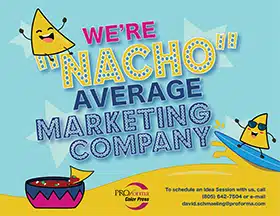Building Emotional Loyalty and Long-Lasting Brand Love
- Updated on: 2021-05-23
- Read original article here

It is essential for brands and retailers to know what motivates loyalty in their customers. Nowadays purchasing decisions are often dependent on whether or not customers share an emotional bond with the brand. A study by CapGemini concluded that 70% of emotionally engaged customers spend 2x more on the brands they are loyal to. This is why, in order to make an impact, brands and retailers must develop emotional loyalty with their customers.
True loyalty goes beyond a rewards card or points system. Emotional loyalty is a deeper connection, which is formed when every communication, action, and input customers receive from a brand makes them feel recognized and important. In other words, emotional loyalty targets the customer’s heart instead of their mind.
In other words, emotional loyalty happens when a customer falls in love with your brand and keeps purchasing from your brand, even when your competitors are offering a better deal. Your customers want to feel like there are people, not machines, behind your brand.
Gaining the trust and respect of a customer is the ultimate goal of emotional loyalty. When a customer feels respected, their ability to trust is augmented dramatically. Customers will place their trust in a retailer or brand if every interaction and channel demonstrates the same genuine behavior.
Tips for building member trust and respect with a loyalty program:
Another way to gain people’s respect is to show generosity in times when it matters the most. When the Covid-19 pandemic first hit in 2020, Hilton donated one million hotel rooms to medical professionals on the front line, and postponed tier expiration for its loyalty program members.
Show customers you care about them by rewarding them for performing various soft actions. These soft actions don’t involve a purchase, but they still provide immense value. A loyalty program provides ample opportunities to incentivize soft actions and show customers that you appreciate their engagement, even when they aren’t spending money.
Ways to engage customers outside of the buying cycle:
Mountaineering product retailer Bergzeit asked Antavo to help build a loyalty program with a Strava integration so members could earn rewards by hiking in the great outdoors.
Customers develop affinity for a brand when their values align with the mission statement of the brand. Similar to trust, affinity creates a strong bond with the customer. However, affinity is a far stronger link. It means customers are willing to go out of their way to support the company. In a loyalty program capable of fostering affinity, some members are more likely to become brand advocates.
Here’s how your brand can build affinity:
The LVR Sneakers Club, a special interest group inside the loyalty program of luxury fashion powerhouse LuisaViaRoma, offers insiders early access to upcoming product drops. The feature is so popular that sneakers are often sold before they go on sale to the public.
Attachment is less about liking a brand and more about making a lasting connection. Customers who are attached to a brand are less likely to leave and are more inclined to engage with the brand on a frequent basis.
Whether customers increase purchase frequency or are more willing to perform soft actions, generating attachment drives many business KPIs.
Tips on building attachment to your brand:
Prize Wheels are an ideal way to gamify an emotional loyalty program: they randomize the reward experience, which has an addictive quality to it.
Rewards should be memorable for your customers. How will members ever feel an emotional connection to your brand if they only ever receive coupons? Make the experience unforgettable with a colorful list of rewards, both physical and digital.
To build a genuine relationship with your customers, go beyond the power of your product or brand by fostering emotional loyalty. Don’t forget: an emotionally invested customer is a loyal customer. That’s why you should focus on the five pillars of emotional engagement: trust, recognition, affinity, attachment and lasting impressions.
Loyalty programs can easily become the “human touch” your business needs. Focus on understanding your customers’ perspectives, relating to them, and empathizing with them.
In the meantime, here is a useful worksheet to help you effectively design your loyalty concept.
Images Powered by 


